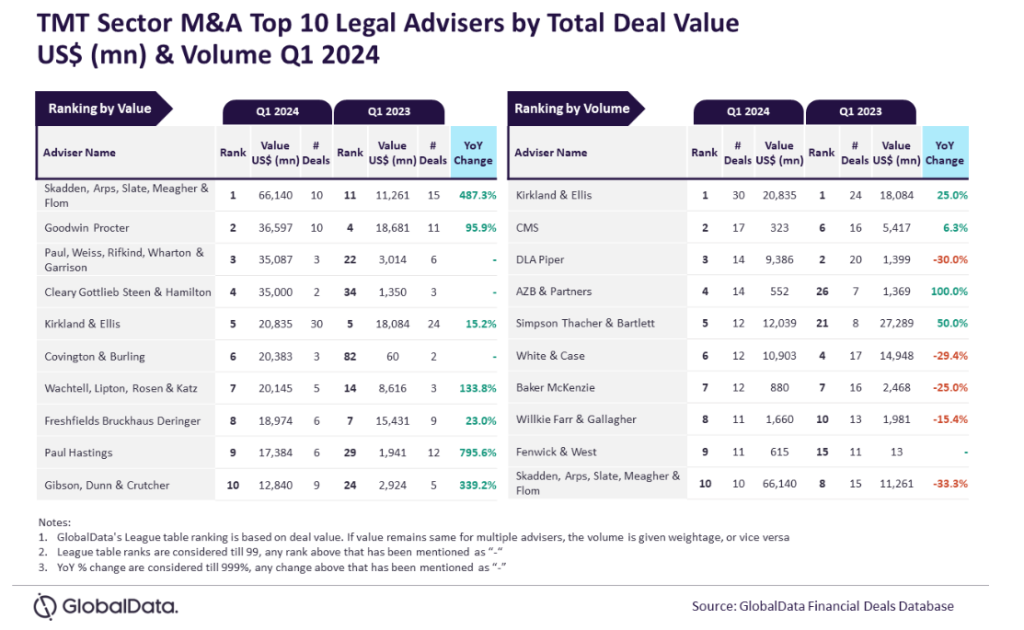
Verdict lists five of the most popular tweets on artificial intelligence in Q4 2020 based on data from GlobalData’s Influencer Platform.
The top tweets were chosen from influencers as tracked by GlobalData’s Influencer Platform, which is based on a scientific process that works on pre-defined parameters. Influencers are selected after a deep analysis of the influencer’s relevance, network strength, engagement, and leading discussions on new and emerging trends.
Top tweets on artificial intelligence in Q4 2020
1. Evan Kirstel’s tweet on Microsoft teaming up with non-profit for cleaning oceans
Evan Kirstel, a chief digital evangelist of eViRA Health, a marketing and advertising company, shared an article on technology company Microsoft’s collaboration with a non-profit organisation (NPO) called The Ocean Cleanup.
Microsoft held two hackathons inviting volunteers to deliver innovative solutions. The Ocean Cleanup was a participant in one of the hackathons and developed a machine learning (ML) model that helps identify waste. The ML model helps track plastic and other wastes and informs on how and where autonomous waste collectors are deployed.
Plastics in oceans form large systems such as the Great Pacific Garbage Patch and break down into microplastics, which is harmful for marine life and people. The project has adopted a passive system for cleanup where solar power is used to autonomously collect plastic waste before it reaches the ocean.
Microsoft teamed up with a nonprofit using autonomous 'interceptor' boats to clean up the ocean and is helping it identify trash with #machinelearning https://t.co/Qieu2AuYe8 #ai pic.twitter.com/caRkaySfwm
How well do you really know your competitors?
Access the most comprehensive Company Profiles on the market, powered by GlobalData. Save hours of research. Gain competitive edge.
 Company Profile – free sample
Company Profile – free sampleThank you!
Your download email will arrive shortly
Not ready to buy yet? Download a free sample
We are confident about the unique quality of our Company Profiles. However, we want you to make the most beneficial decision for your business, so we offer a free sample that you can download by submitting the below form
By GlobalData— Evan Kirstel #TechFluencer (@EvanKirstel) October 18, 2020
Username: Evan Kirstel
Twitter handle: @EvanKirstel
Retweets: 219
Likes: 624
2. Kirk Borne’s tweet on the impact of emerging technologies on industries
Kirk Borne, principal data scientist at Booz Allen Hamilton, an information technology and consulting firm, shared an article on how emerging technologies are impacting various industries. The article discusses how leading industries have deployed emerging technologies such as artificial intelligence (AI), internet of things (IoT), blockchain, virtual reality (VR), augmented reality (AR) and machine learning (ML) to enhance their processes and operations.
AI was discussed in the context of innovations being implemented across speech recognition, learning, problem solving, and planning. ML, for instance, helps intelligent machines to cognitively learn and improve from experiences and activities without being programmed to do so. The application of AI in real estate, for example, helps firms to build comprehensive property valuation and suggestion models. Likewise, in healthcare cognitive systems can take notes, prepare patient files, and also generate treatment options, the article noted.
How #EmergingTechnologies are impacting industries: https://t.co/jSFqwuXt8D
———————#BigData #DataScience #AI #MachineLearning #Automation #IoT #IIoT #IoTPL #Blockchain #DigitalTransformation #fintech #insurtech #HealthTech #Retail #EdTech #Industry40 #4IR #AR #VR pic.twitter.com/SRWj4e4v2e— Kirk Borne (@KirkDBorne) October 20, 2020
Username: Kirk Borne
Twitter handle: @KirkDBorne
Retweets: 80
Likes: 106
3. Mario Pawlowski’s tweet on an algorithm that predicts success of start-ups
Mario Pawlowski, CEO of iTrucker, shared a video on an algorithm that can predict the success of a start-up. He video highlights how an AI company was given the task of programming a computer that could pick out 50 unknown companies that would transform the world. The AI programme, which was conducted in 2009, included names of high market valuation companies today such as Spotify, Evernote, and Etsy. In addition, 20% of the 50 companies selected have now reached billion-dollar valuations.
Businessweek magazine, the pioneer of the programme, has now asked the AI company to deliver the names of 50 unheard companies it thinks will be the next big thing in future, the video detailed. Companies exploring key areas of innovations in AR, image recognition, drones, and AI are expected to feature in the list.
This #algorithm can predict if your #startup will be successful@wef MT @Ronald_vanLoon #AI #ArtificialIntelligence #MachineLearning #ML #4IR #DataScience #Analytics @jblefevre60 @MargaretSiegien @mvollmer1 @Nicochan33 @FrRonconi @ShiCooks @YuHelenYu pic.twitter.com/mr6k2FXFcL
— Mario Pawlowski #CES2022 (@PawlowskiMario) October 19, 2020
Username: Mario Pawlowski
Twitter handle: @PawlowskiMario
Retweets: 86
Likes: 102
4. Spiros Margaris’ tweet on famous analytics and AI disasters
Spiros Margaris, advisor and board member of margaris ventures, a venture capital and private equity firm, shared an article on some high-profile analytics and AI disasters over the past decade that cost companies their reputation, revenues, and even their lives.
One of the blunders included the failure of a healthcare prediction algorithm to flag patients of colour for high-risk care management programmes in the US. According to the 2019 study, the algorithm was more likely to recommend white patients than black patients, with sicker black patients receiving lower healthcare need scores than healthier whites.
Another blunder was the release of Tay, an AI chatbot by Microsoft in 2016. The company released the chatbot on the social media platform Twitter as part of a ‘conversational understanding’ experiment. However, within 16 hours, the chatbot had posted 95,000 racist, offensive, misogynist, and anti-Semitic tweets. As a result, the company pulled the plug on the experiment, the article detailed.
Good read
5 famous #analytics and #AI #disasters https://t.co/fIlcVZzpzA #fintech #ArtificialIntelligence #MachineLearning #BigData @CIOonline @ThorOlavsrud @pierrepinna @jblefevre60 @DioFavatas @mclynd @efipm @terence_mills @andi_staub @SabineVdL @kuriharan @ipfconline1
— Spiros Margaris (@SpirosMargaris) October 23, 2020
Username: Spiros Margaris
Twitter handle: @SpirosMargaris
Retweets: 42
Likes: 67
5. Dr Ganapathi Pulipaka’s tweet on AI being used to compress images
Dr Ganapathi Pulipaka, a SAP technology architect, shared an article on how AI can be used to compress images. Experts state that data driven algorithms such as neural networks have seen a recent surge because they are powerful hardware, cheap, and deal with vast amounts of data. Authors now claim that they can even compress images at a faster pace.
A double network was used to compress images, the article noted. The first network generates a compact representation (ComCNN), while the second corrects the codec image, and tries to recover the original image. The authors called this the Reconstructive CNN (RecCNN).
This Week's Highlight. Using AI to Super Compress Images. #BigData #Analytics #DataScience #AI #MachineLearning #IoT #IIoT #Python #RStats #JavaScript #ReactJS #GoLang #CloudComputing #Serverless #DataScientist #Linux #Programming #Coding #100DaysofCode https://t.co/Lt85RsWSmx pic.twitter.com/PVMSzalZdM
— Dr. Ganapathi Pulipaka 🇺🇸 (@gp_pulipaka) October 9, 2020
Username: Ganapathi Pulipaka
Twitter handle: @gp_pulipaka
Retweets: 64
Likes: 46








Related Company Profiles
Spotify AB
Microsoft Corp
Etsy Inc
SAP SE